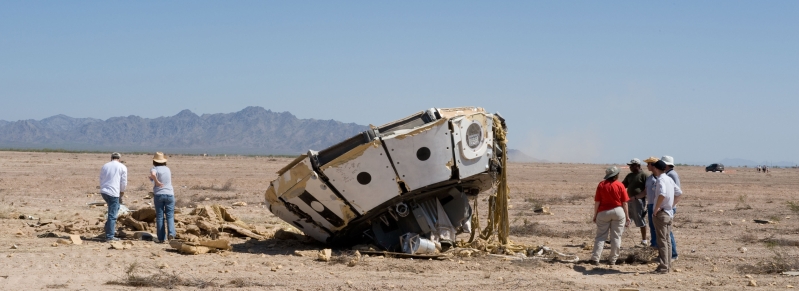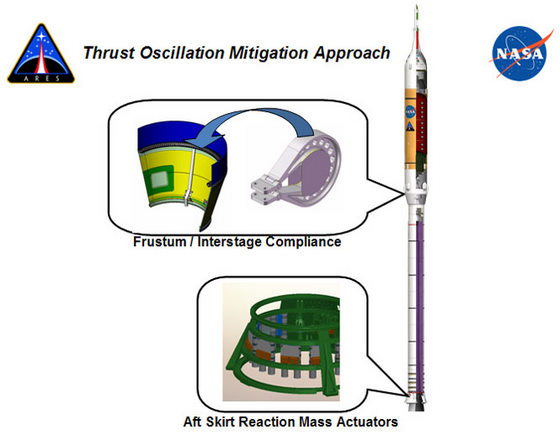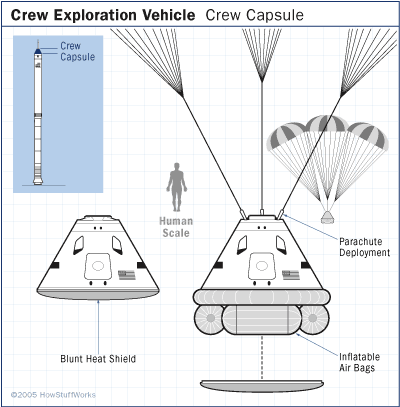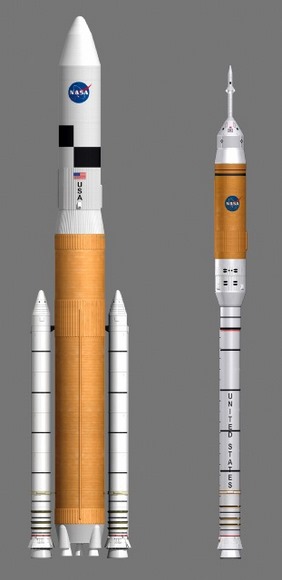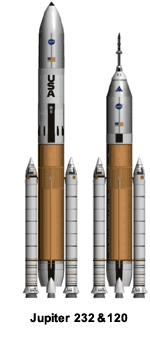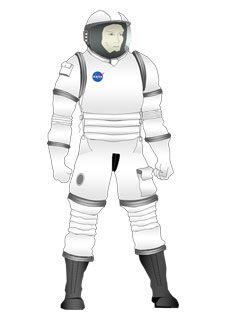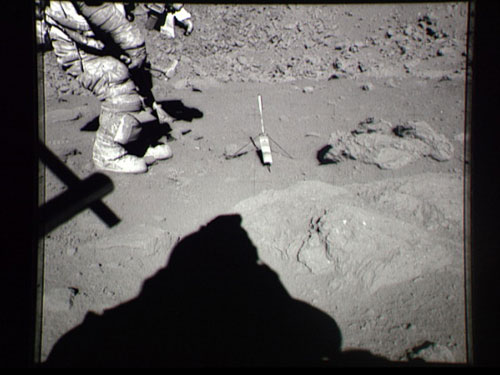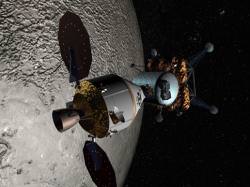[/caption]
As previously reported on the Universe Today, recent parachute test-drops for the Constellation Project have brought mixed results. The Ares I drogue parachute test appeared to perform flawlessly on July 24th, but the July 31st Orion test drop was a different story. Very early on in the parachute test, the “programmer parachute” (the first small parachute to be deployed, righting the descending crew module, setting Orion up for drogue deployment) failed after not inflating in the turbulent wake of the vehicle. This event set in motion complete parachute failure, ultimately forcing a hard-landing (crash) into the Arizona desert. Now NASA has released a video and pictures of the test…
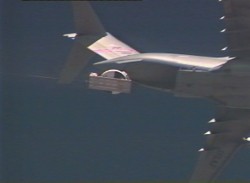
On July 31st, hopes were high for a successful parachute test drop above the U.S. Army’s Yuma Proving Ground in Arizona. The week before, the Ares I re-usable booster rocket drogue parachutes had proven themselves, so pressure was on for the Orion analogue – the Parachute Test Vehicle (PTV) – to perform as it should.
A re-entering crew module has a complicated series of parachute deployments before it can land safely (a.k.a. a “soft” landing). Unfortunately, the July 31st test drop was anything but soft. Although the parachute deployment system performed as it should (i.e. the 18 parachutes opened at the correct time and in the correct manner), but the problem came right at the start of the chain: when the very first “programmer parachute” was deployed. As with any descending space vehicle, a programmer parachute needs to be deployed to ensure the crew module is a) the correct way up and b) set up for the critical “drogue parachute” deployment. The drogue reduces the vehicle’s velocity very quickly, moments before the main parachutes are deployed.
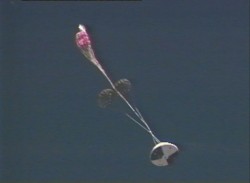
Alas, the programmer parachute never opened fully in the turbulent air behind the PTV, forcing the vehicle to swing wildly out of control. The drogue parachute had little chance to slow the descent as the spinning vehicle cased the inflating drogues to be ripped away. So the PTV went into freefall…
After falling for several seconds, the main parachutes made an appearance. Looking more like a party popper than a crew module, two of the main parachutes were ripped away like streamers, only one of the three parachutes remained connected. So its fate was sealed, the PTV was going to make a bone crushing hard-landing.
See the NASA video of the whole test, from drop to crash »
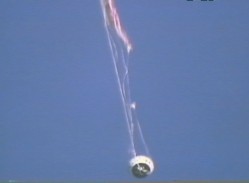
Oh well. I hope NASA has better luck next time. According to officials, this does not indicate an Orion technology failure, it was a “test technique failure” that was bound to frustrate the engineers on the ground. After all, the parachutes did deploy, they just didn’t open…
Suddenly the April hard-landing of the Russian Soyuz vehicle doesn’t seem so bad…
Source: NASA

